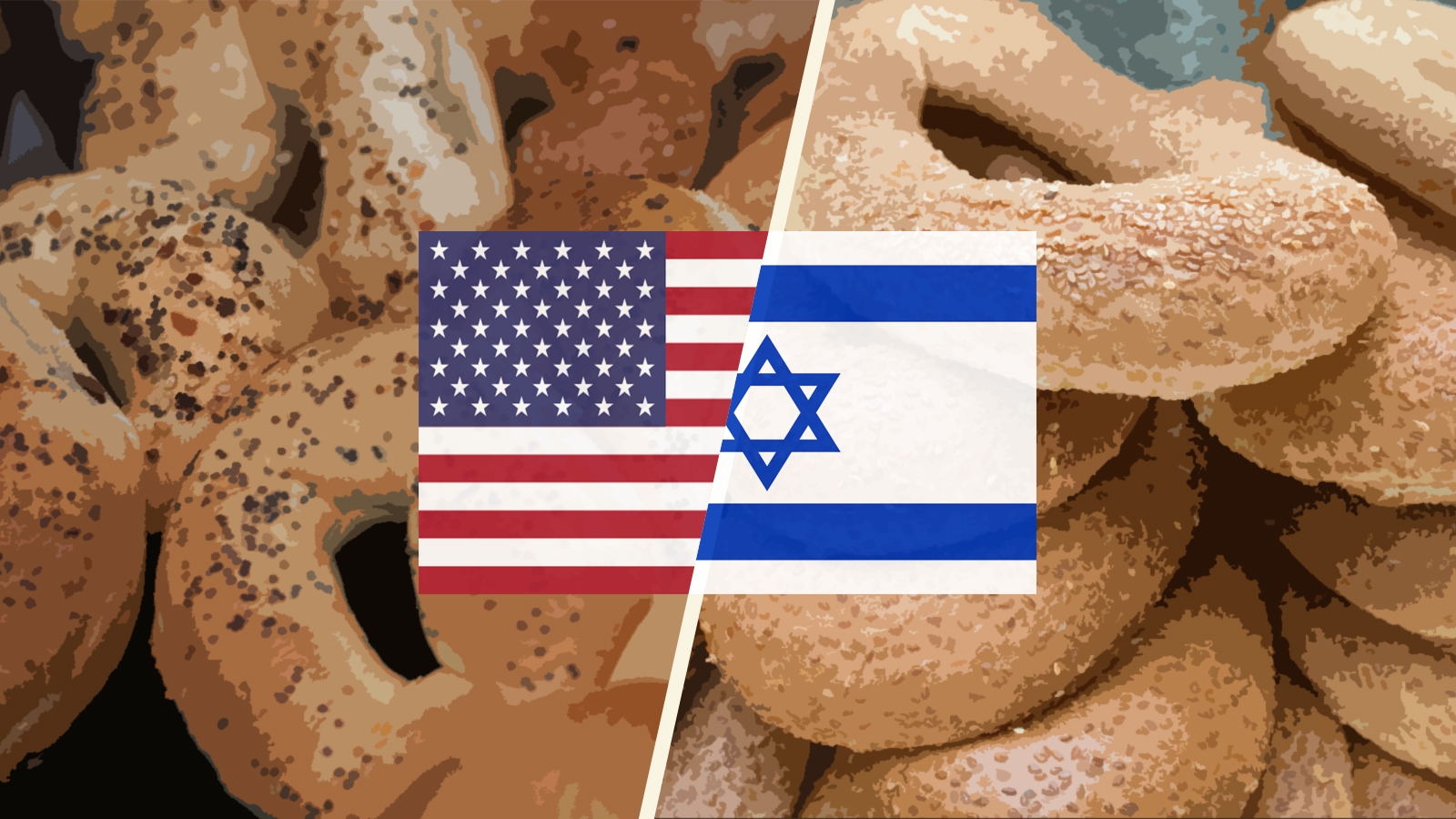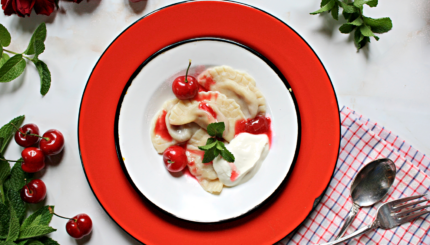What do you think of when you hear “Jewish food?”
If it’s bagels, rugelach or kugel, there’s a reason for that.
While North America is home to Jewish communities hailing from around the world, certain Ashkenazi dishes have been immortalized by New York Jewish delis and appetizing stores, as well as pop culture (“Seinfeld,” I’m looking at you) as “American Jewish food” — and, by extension, “Jewish food.”
Try ordering these foods in Israel, however, and you’ll be in for a shock. “Jewish food” means something totally different (and more inclusive) here. Many “American Jewish foods” are simply considered American, or taste very different. To save you from quizzical looks when you request babka, or an unexpected burst of spicy black pepper as you bite into a slice of noodle kugel, I’ve broken down the biggest differences between five classic Jewish foods in the U.S. and Israel. Consider me your culinary translator.
The Nosher celebrates the traditions and recipes that have brought Jews together for centuries. Donate today to keep The Nosher's stories and recipes accessible to all.
1. Rugelach
American and Israeli versions of this crescent-shaped pastry hail from Central Europe, where rugelach (and their predecessors) were made from yeasted dough and filled with jam, mon (poppy seeds) or cinnamon and nuts. In Israel, rugelach are still made with yeasted dough, which results in squidgy, dense pastries, while in the States, the yeast — a complex, time-consuming ingredient to work with — was replaced sometime around the 1930s by a simpler dough enriched with cream cheese, yielding a flakier cookie.
A cinnamon filling is common in both countries, and Israelis like chocolate and sometimes halva, too — though that’s usually as creative as it gets. In the States, however, alongside classic raisin and nut fillings sit a dizzying array of contemporary takes, including s’mores- and everything but the bagel seasoning-flavoured rugelach.
2. Babka
You can’t find babka in Israel, but you can find Krantz cake, which is basically the same thing. Both are made with a yeasted dough and have disputed origins — including German cakes, Hungarian pastries and Ashkenazi bakers getting creative with leftover challah dough.
While Krantz cake is very common in Israel, it does not have the cult-like following babka’s amassed in the U.S. over the past decade. Ironically, this following was prompted by Breads Bakery’s chocolate-hazelnut babka, widely considered to be one of the best in New York City. But Breads isn’t an American bakery, it’s Israeli; Lehamim (“breads” in Hebrew) bakery opened in Tel Aviv in 2002.
Like Breads’ babka, Israeli Krantz cakes tend to be made with laminated doughs and filled with chocolate and/or halva, and sometimes pistachio. Americans are certainly more inventive with their babka, playing with savory fillings and American baking trends like funfetti, alongside classic cinnamon and chocolate flavors.
3. Bagels
Bagels are considered an American food in Israel. They are hard to find outside of chain Holy Bagel (with locations in areas with lots of Anglo immigrants) and a few New York-style bagel spots that have popped up in Tel Aviv in the last 10 years. Unlike the abundance of bagel and schmear flavors in the States, Israel is limited to the classics (plain, sesame, onion, cinnamon-raisin, etc.) — and “schmear” isn’t in our vocabulary.
What are very popular in Israel are Jerusalem bagels: Baked (not boiled) ovals of bread covered in sesame seeds, often served with za’atar. These days, with the rise of Israeli food in the U.S., Jerusalem bagels are increasingly available. To make matters more confusing, in Israel “bageleh,” a term that refers to Jerusalem bagels, any round bread with a hole (often more similar to an American soft pretzel than a bagel) and hard pretzel snacks of any shape, are plentiful.
4. Kugel
In both locations, noodle (AKA lockshen) kugel is more popular than potato kugel, and leans sweet rather than savory. Sweet noodle kugel originated in Poland, thanks to the sugar beet refining industry. Cinnamon, raisins and, later, cottage or farmer’s cheese were added to the mix. When Jewish immigrants came to America they added all sorts of things, including canned fruits and a cornflake topping.
Israeli noodle kugel (made with thin, rather than thick noodles) is named after its birthplace: Jerusalem. Kugel Yerushalmi (Jerusalemite kugel) is sweetened with caramel and spiced with black pepper, two ingredients borrowed from the Mizrahi Jewish kitchen. It has a crunchy crust and is considered an Israeli, rather than Eastern European Ashkenazi, dish.
5. Pickles
Most Jewish households in both Israel and the U.S. have pickled cucumbers in their refrigerator, brined Eastern European-style, with garlic and dill. However, Israeli pickles are saltier, spicier and altogether more intense; “full sour” in American terms. They are made with small, thin Persian cucumbers, while pickles in the U.S. are made with thicker, rough-skinned Kirby cucumbers. Each version works great in a sandwich: from falafel in Israel to an American hamburger.



